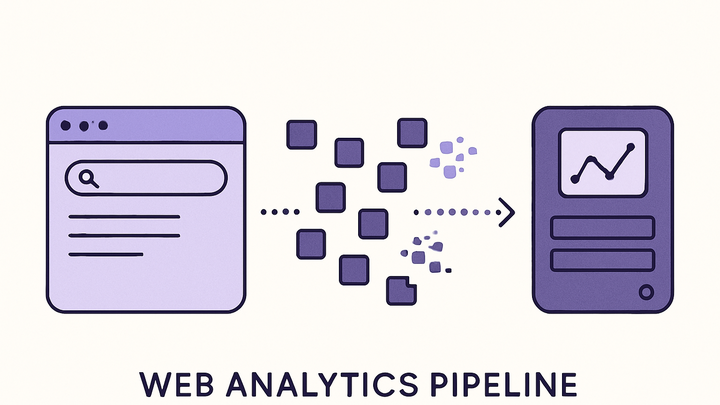Published on 2025-06-28T13:44:41Z
What is Data Loss in Analytics? Examples and Impacts
Data Loss in analytics refers to the failure to capture, record, or store user interactions or events at any point in the data collection pipeline. This can happen due to technical glitches, privacy measures, network issues, or misconfiguration of tracking scripts. When data is lost, analytics reports become incomplete, leading to inaccurate metrics and misguided decisions. High rates of data loss can erode trust in analytics systems and obscure critical user behavior insights. Data loss can manifest as missing page views, dropped conversions, or gaps in user journeys. Recognizing and addressing data loss is essential for maintaining high-quality analytics and operational excellence.
Data loss
Data loss occurs when analytics tools miss capturing user interactions, skewing metrics and impairing decision-making.
Why Data Loss Matters in Analytics
Data loss undermines the integrity of analytics reports by creating gaps in data collection. When analytics platforms miss page views, events, or conversions, stakeholders receive an incomplete picture of user behavior. This can lead to inaccurate KPIs, misguided business decisions, and wasted resources. High data loss rates erode trust in data-driven strategies and may mask critical issues like security breaches or performance bottlenecks. Understanding why data loss matters is the first step toward improving data reliability.
-
Inaccurate reporting
Missing data skews metrics like sessions, page views, and conversion rates, leading to flawed insights and strategies.
-
Poor decision making
Decisions based on incomplete data can misallocate budget, target wrong audiences, and undermine growth initiatives.
-
Loss of trust
Stakeholders may lose confidence in analytics outputs if data discrepancies persist, hampering the adoption of a data-driven culture.
Common Causes of Data Loss
Data loss can occur at multiple points in the analytics pipeline due to technical limitations, user behavior, or configuration errors. By identifying these causes, analysts can implement targeted fixes to recover missing data. Common culprits range from browser privacy features to misconfigured tags.
-
Browser privacy modes
Incognito or strict tracking prevention settings in browsers block analytics scripts and cookies.
-
Ad blockers and script blockers
Browser extensions can prevent analytics scripts from executing, dropping entire data points.
-
Network failures
Connectivity issues or timeouts can interrupt API calls to analytics servers, leading to missing events.
-
Consent management
If users decline cookie consent banners, tracking pixels or scripts may not fire, causing data loss.
-
Tagging errors
Incorrect placement, naming, or configuration of tracking code snippets results in uncollected data.
Impacts of Data Loss on Business Outcomes
When critical data points go missing, businesses risk flawed audience targeting, incorrect ROI calculations, and compliance issues. Understanding the tangible consequences of data loss helps in prioritizing remediation efforts.
-
Misguided marketing campaigns
Without accurate conversion data, marketers cannot properly optimize ad spend or attribution models.
-
Revenue leakage
Failure to track checkout completions or purchase events leads to underreported e-commerce revenue and planning errors.
-
Poor user experience
Lack of insight into drop-offs or errors prevents timely UX improvements, causing frustration and churn.
-
Regulatory non-compliance
Incomplete consent records or missing audit logs hinder GDPR, CCPA, or other data protection regulation compliance.
Strategies to Mitigate Data Loss
Proactive measures reduce the risk and impact of data loss. Combine technical adjustments with monitoring and fallbacks to ensure data completeness.
-
Implement server-side tracking
Move some data collection to server-side endpoints to bypass client-side blockers.
-
Use cookieless analytics
Adopt tools like PlainSignal that rely on cookieless tracking to capture data when cookies fail.
-
Leverage consent apis
Integrate Consent Management Platforms (CMPs) with analytics scripts to conditionally fire tags based on user permissions.
-
Regular tag audits
Use tag management systems (e.g., Google Tag Manager) to routinely validate tag health and firing accuracy.
-
Set up data quality alerts
Configure anomaly detection in GA4 or third-party tools to alert on sudden drops in event volumes.
Example: Monitoring Data Loss with PlainSignal and GA4
Use real-world tracking snippets to understand how missing tags or misconfigurations cause data loss, and how monitoring can catch gaps.
-
PlainSignal tracking snippet
Implement PlainSignal’s lightweight, cookie-free script. This ensures minimal loss in browsers with strict cookie policies.
-
Code example
<link rel="preconnect" href="//eu.plainsignal.com/" crossorigin /> <script defer data-do="yourwebsitedomain.com" data-id="0GQV1xmtzQQ" data-api="//eu.plainsignal.com" src="//cdn.plainsignal.com/plainsignal-min.js"></script>
-
-
GA4 tracking snippet
Place Google Analytics 4 tag to capture comprehensive event data. Monitor real-time reports to detect missing events.
-
Code example
<!-- Global site tag (gtag.js) - Google Analytics --> <script async src="https://www.googletagmanager.com/gtag/js?id=G-XXXXXXXXXX"></script> <script> window.dataLayer = window.dataLayer || []; function gtag(){dataLayer.push(arguments);} gtag('js', new Date()); gtag('config', 'G-XXXXXXXXXX'); </script>
-
-
Monitoring data loss
Use PlainSignal’s dashboard or GA4’s Data Stream diagnostics to compare expected vs actual event counts. Set up alerts for sudden drops in traffic.
